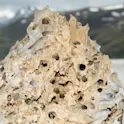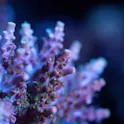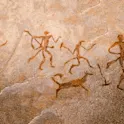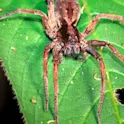The two-thousand-year-old mystery of the havoc-wreaking worm
By Daegan Miller / University of Massachusetts Amherst Office of News and Media Relations Section of a piling attacked by shipworms in Belfast, Maine. Image credit: Barry Goodell / University of Massachusetts Amherst Humans have known for over two thousand years that shipworms, a worm-like mollusk, are responsible for damage to wooden boats, docks, dikes and piers. Yet new research from the University of Massachusetts Amherst published in Frontiers in Microbiology reveals that we still don’t know the most basic thing about them: how they eat. “It’s unbelievable,” says Reuben Shipway, adjunct assistant professor in microbiology at UMass Amherst, research fellow at the Centre for Enzyme Innovation at the University of Portsmouth, UK, and one of the paper’s authors. “The ancient Greeks wrote about them, Christopher Columbus lost his fleet due to what he called ‘the havoc which the worm had wrought,’ and, today, shipworms cause billions of dollars of damage a year.” Read original article. Download original article (pdf) Shipworms also play a key role in mangrove forest ecosystems, found throughout the world’s tropical regions, and are responsible for cycling a huge amount of carbon through the web of life. “Yet,” says Shipway, “we still don’t know how they do what […]














